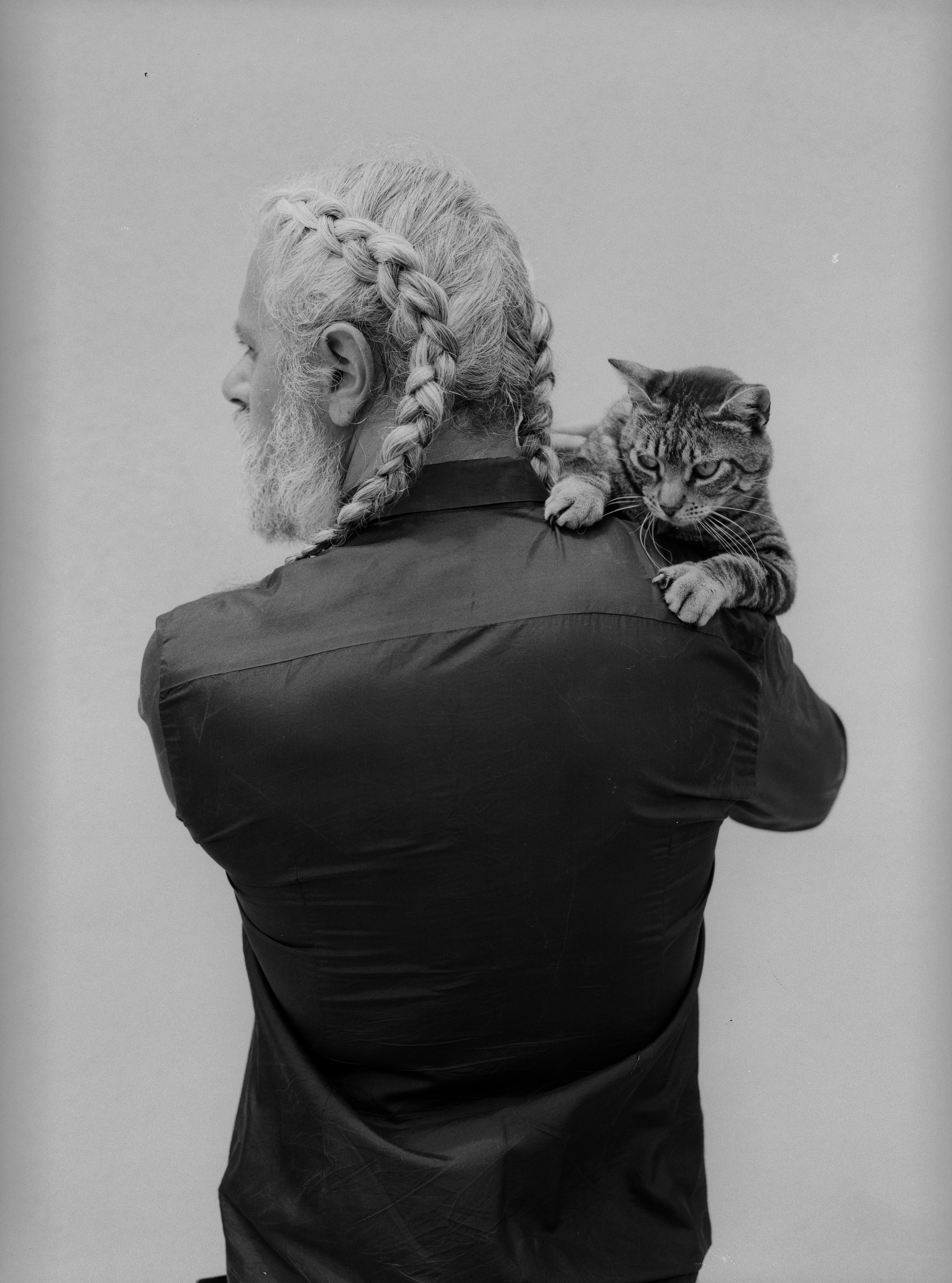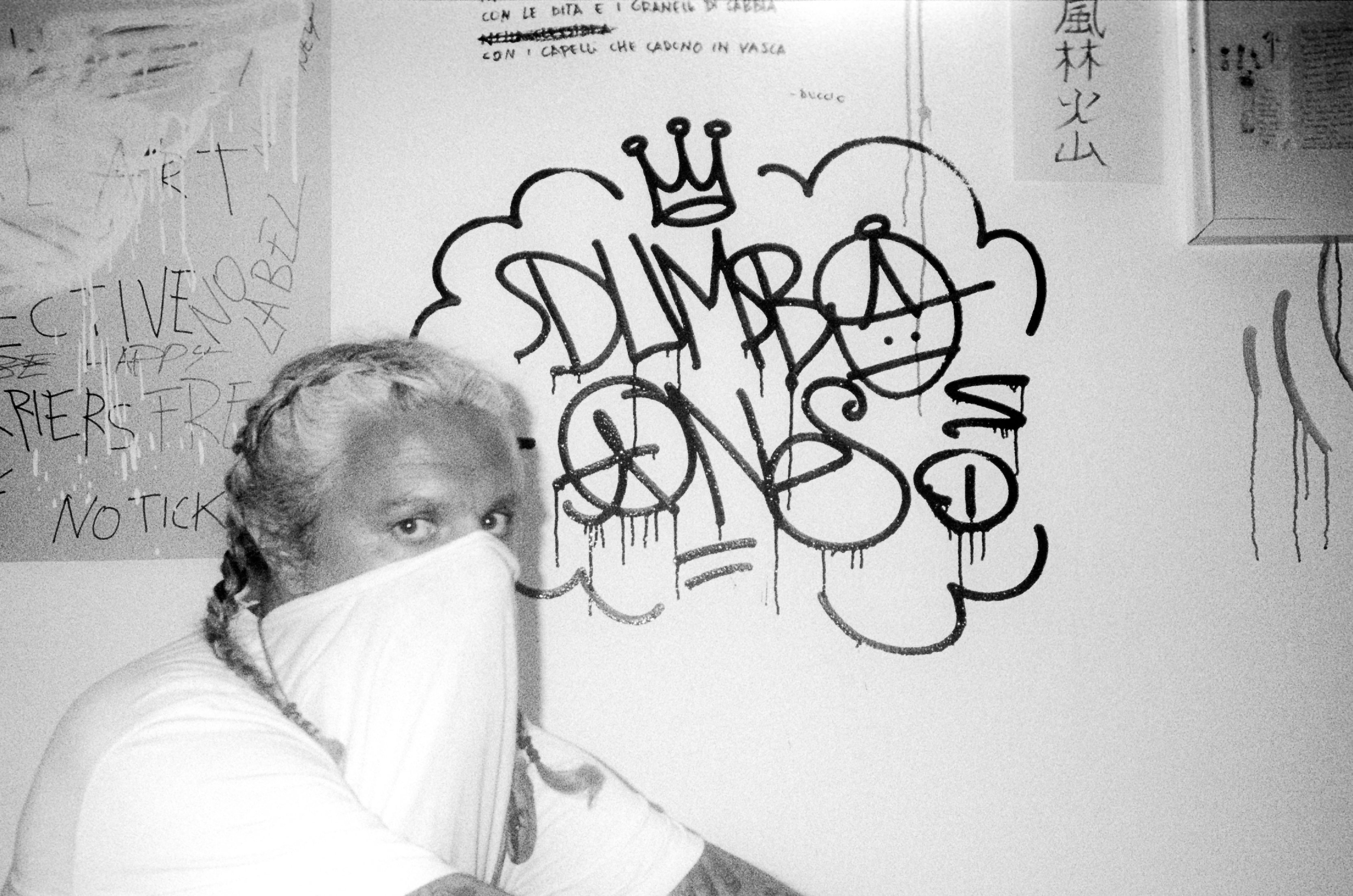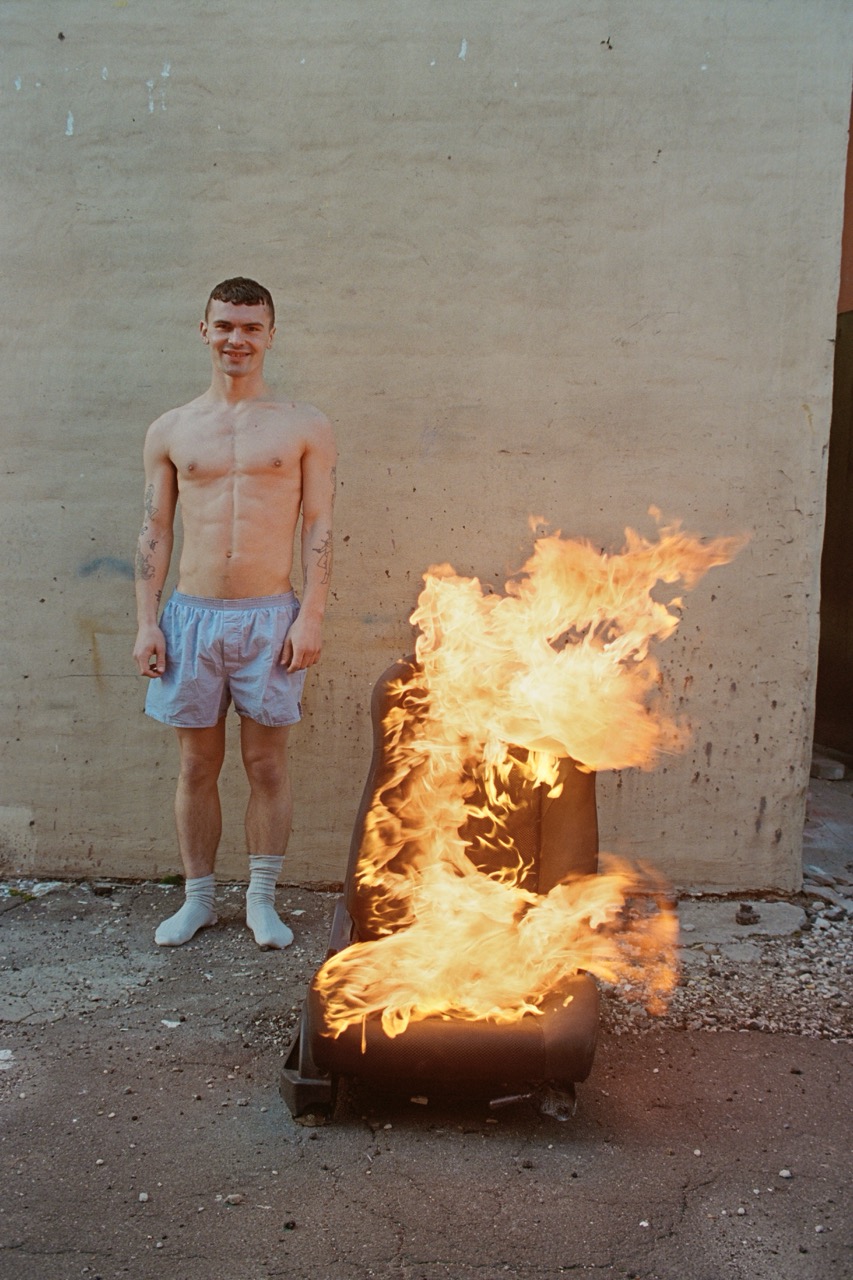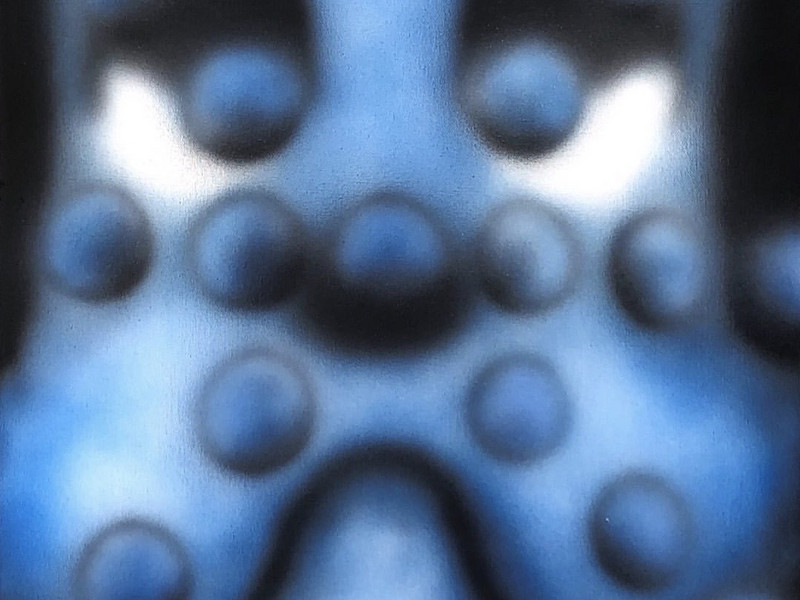Try to cope.
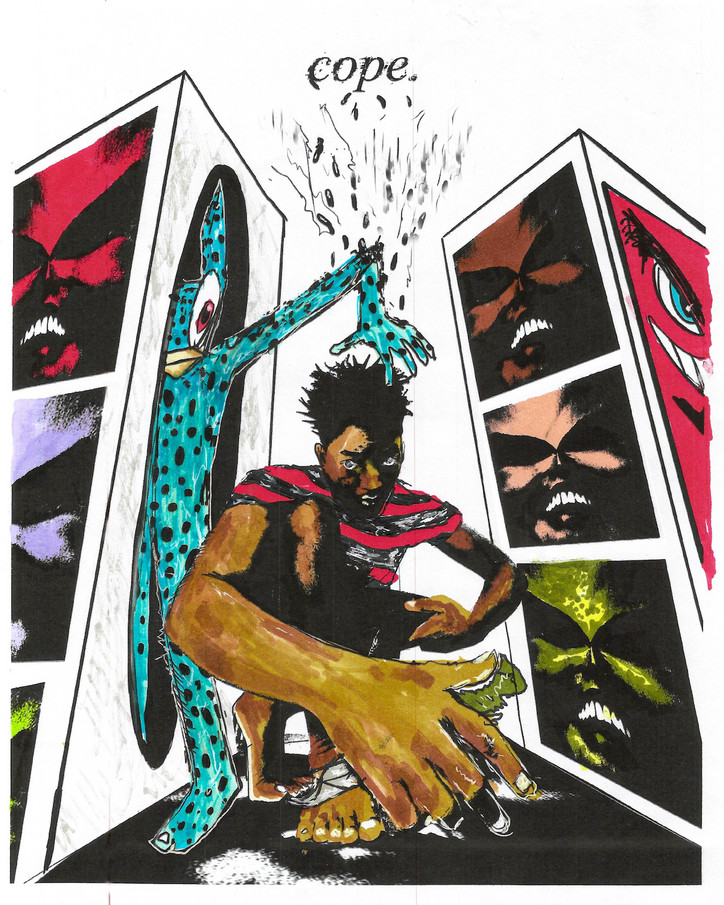
Along with what now seems like the rest of the world, Aleqth is dipping his toes into the digital art sphere. All pages from “cope. VOL. 1” are available to own as NFT’s. However, if you still prefer the pre-crypto construct that is physical media, copies of the book are also available to purchase on his website.
We sat down with the artist to discuss his book, cyber surrealism, and what cope. really means to him.


You made your own book, which is a huge milestone for someone at 22. Can you tell me a little bit about that?
You know, Megan, I'm gonna be honest – I had no idea how I was gonna make this book happen. I had no clue. I just knew, like, 'I need to make this book. However it happens, I'm gonna see it through.' But I didn't actually start the book until March of last year. I had been taking pre-orders in December – honestly still not knowing what I was doing – but people just believed in me. Like, 'Yeah, you'll figure it out. Here's my money.' The process that I started with was very different than my typical art practice. It involved a lot of printing of images and then reworking. It's a mix between digital and also analog – which was kind of in real life with markers and paint and stuff. I think the most special part about working on it was I was sharing the pages as I was making them on Instagram. It's a big deal for me to even have a hardcover book with 200 pages because I grew up on Dr. Seuss. Every night I wanted to read 'The Cat in the Hat' or 'Green Eggs and Ham.' Those were my two favorites. And then 'The Cat in the Hat' movie dropped in like 2006 and completely changed my world, how I saw everything.
That movie is actually insane, but it's also so artistic and camp. It was underappreciated, I think.
It's so underappreciated! It activated something in me which was, like, a surrealism that was tangible for a child. I wasn't looking at a Salvador Dalí painting, I was watching 'The Cat in the Hat.' Experiencing that world just triggered something within me and I feel like I'm always inspired by that. cope. is very inspired by that world of surreal imagery and energy – a dream-like quality. My friend mentioned that my work kind of seems like digital surrealism, or he calls it 'net surrealism,' which I'm exploring right now because it is very internet influenced.



Definitely. Also with NFTs, I feel like the world of art is changing so much and like there's so much possibility. I don't really understand them, but –
You'll figure it out. I mean, it's so early. It's like trying to explain to somebody what Facebook is in 2006. And it's gonna expand in terms of definition. And of course it's gonna be polarizing, but eventually it'll be a technology that I think revolutionizes how we interact with art and intellectual property. I actually minted all the pages from my book as NFTs.
You did what with the pages?
It's called minting – when you actually put it on an NFT platform and they're available to purchase as NFT’s. So if somebody had the book and wanted the NFT off a page of the book, it could be theirs. It's kind of similar to in Japan – you know Studio Ghibli films? You can get a single frame of that film, and then it’s yours. And when you're watching a movie, you can say, 'I own that frame.'
That’s crazy. I didn't know that about Studio Ghibli.
Yeah. On the cover of the book is my car. You know the story of the car, right?


Yeah. Well, I know you spray-painted it.
Yeah. So, the car's spray painted. I used to get so many questions about it. Like, 'Yo, did your girl do this? What's up with your car? What's going on?' It took a certain courage to keep driving it and live with the decision of doing that. But I look at it as my artwork and I think it made me realize just to trust my own ideas and embrace criticism instead of rejecting or running away from it because it's making people think in a different way.
Is that why you made it the cover?
Yeah, but also there's levels to why it's the cover. I'm trying to sell the car as well as an NFT. So I thought that by making it the cover of my first book, it would drive the value of the car in itself. If it's that much of a bigger deal, then it's no longer just a car – it's a part of my life. It's an artwork. It served as a vessel for my previous life circumstance and where I am or right now, cause I drove that shit all down the East Coast to Florida. There's just this crazy relationship with this car. It's still got the same markings on it from before all this even happened, and that's why I don't want to touch it anymore. I feel like it has a strange spiritual charge, like, 'This is building. Trust the ideas that you have.'
Is there an underlying theme in the book or is it different for every page?
Oh, that's a great question. Actually, that drives it even further because the underlying theme in the book was a conscious stream, chronological but contingent based on the techniques and energies of the pages before. So, if I made one page or try to outdo another page or try to expand on certain ideas – they're not necessarily linked in terms of story, but you can see it moment by moment. It was kind of capturing energies on specific days, and I thought that was an interesting way to tell a story. It's kind of like a period – step back and look at things as like, 'This was a moment,’ as opposed to 'This happened, then this happened, then this happened.' So it's expanding on the ideas that I've discovered through this intuition, and I think that's a key component. The book in itself is just intuitively doing it instead of trying to think too hard. There's a lot of pages that I go back to now and I'm like, 'Ugh, that's in a book.' But that 'ugh' feeling is actually why it should be in the book.



Definitely. The last time we talked, you said your art was kind of angry. Like, there were a lot of teeth present. Have you seen it evolve since then? Is there an evolution throughout the book?
I think the book brought my work to a level that it was no longer just the teeth and stuff. I still have the teeth and eyes, but now I'm realizing that my physical body can actually interact with these ideas and forms that I'm creating. That's something I want to explore even more, hopefully in the form of a show. Like, what if I could just put myself into these worlds? That's an idea I was trying to expand on in the book. What that does is it makes it kind of comedic, like a cartoon, and not just dark. It took me a while to even understand that the art was dark. It was usually from people telling me like, 'Yo, what if you're like possessed or some shit.' But now I realize it's a language that's being built and I'm embracing that, cause I see it's a reflection of some parts of me.
Speaking of shows, didn't you have a gallery a while ago? I saw that the editor of The New York Times bought a piece. What was that all about?
So crazy! In June I went to a group show called 'Nightmare' at The New Image Art gallery in West Hollywood. They wanted these two big paintings that I had done to be in the show. But on the night of the show, I get there and they're like, 'Oh, we couldn't put your paintings up. But we put these drawings up that you made on the flight to LA.' I was furious. I thought, 'I finally get to show these paintings that I made in the midst of COVID.' And they just didn't show them. I went back to the hotel and just kind of cried about it – not really any tears, but like I was like, 'Wow, it's over.' But the morning of, we're walking around LA and the gallery owner calls me. She's like, 'Alex, guess what just happened? The chief editor of the New York Times – Dean Baquet – just bought three of your drawings.' And this is something that rarely happens. He comes in every now and then, and the last time he did was like three years ago for an artist who's really big right now – like crazy big. So I was like, 'Wait, what? The New York Times? What's he doing in LA?' But yeah, that was like the first moment for me where I'm like, 'Yo, I'm at a level now that's pretty dope. I gotta take this shit more serious.' And being able to tell that to my mom and dad, like, 'Yo, I finally did it!'

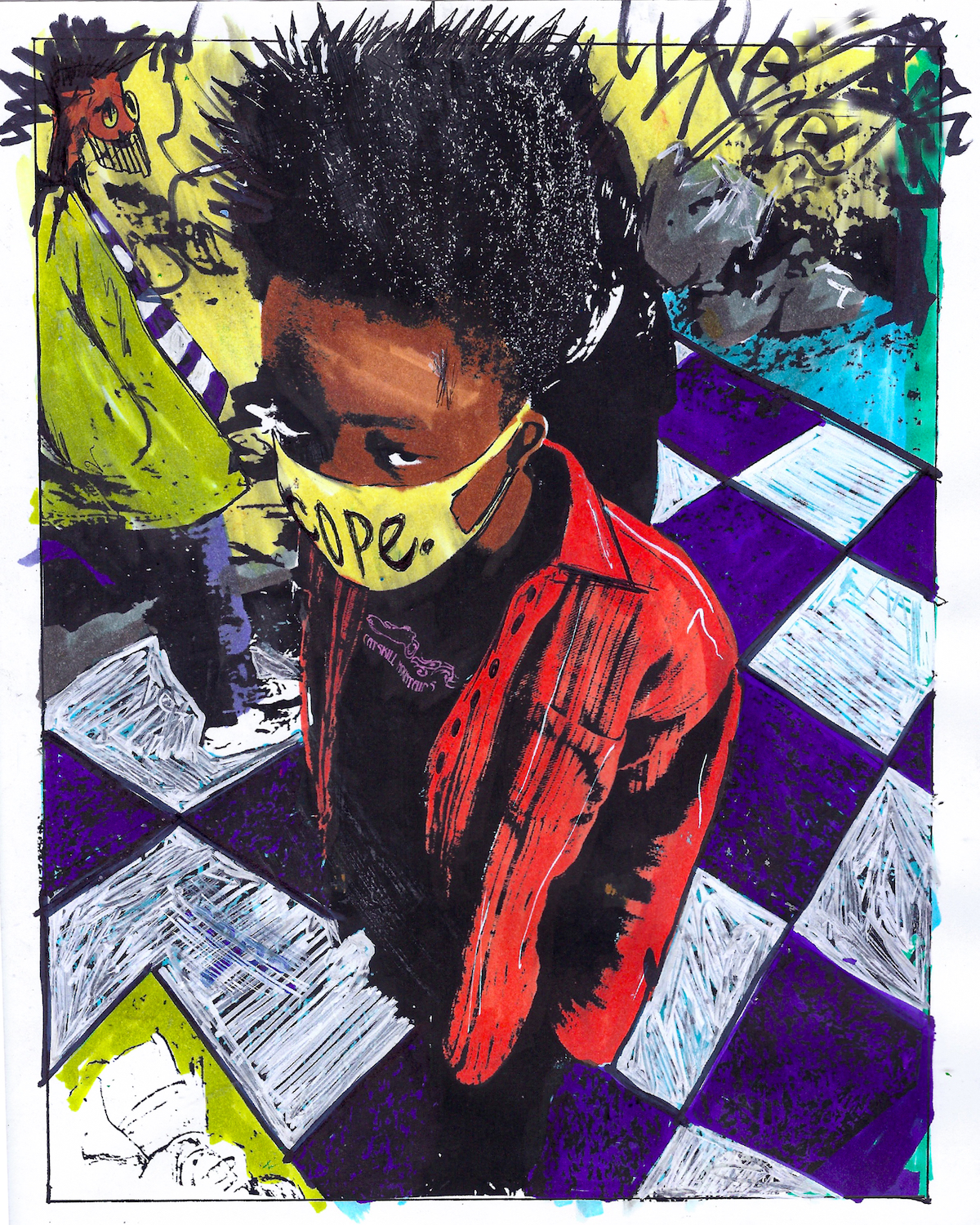
Has the meaning behind the name cope. changed for you throughout all of this?
I think it has changed. It's expanding in terms of definition – to deal with life in a way that just works for you. We're always posed with challenges and how we can manage to handle these challenges best. I feel like a lot of that has to do with perspective, and that's something that I've been really focused on – a shift in perspective. Maybe not seeing things as negative upfront. Maybe acknowledging that it's not what you expected, but this occurrence opens up the opportunity for another thing to exist. I think that kind of embodies what cope. is, but also trying to spread a message about trusting whatever happens in your life and trying to establish a sense of community – that you're not alone in your creative endeavors and that there's a vision of the future that we can all participate in


Speaking of the future, what's next for you?
As far as projects, I'm trying to tackle more film stuff now. I think I'm ready to write more and direct. I want to take on the role of, like, creative director. Now I'm trying to temper with the constructs of reality and our environment – to capture magical moments and showcase that to people, I think that's what's next. It feels like such a natural progression, but I feel like I'm also such a student. I just want to have a limitless expression going forward. But yeah, more music, but definitely trying to capitalize on being a visual artist in the most immersive way possible.
Any final words?
Thank you Virgil Abloh.

















